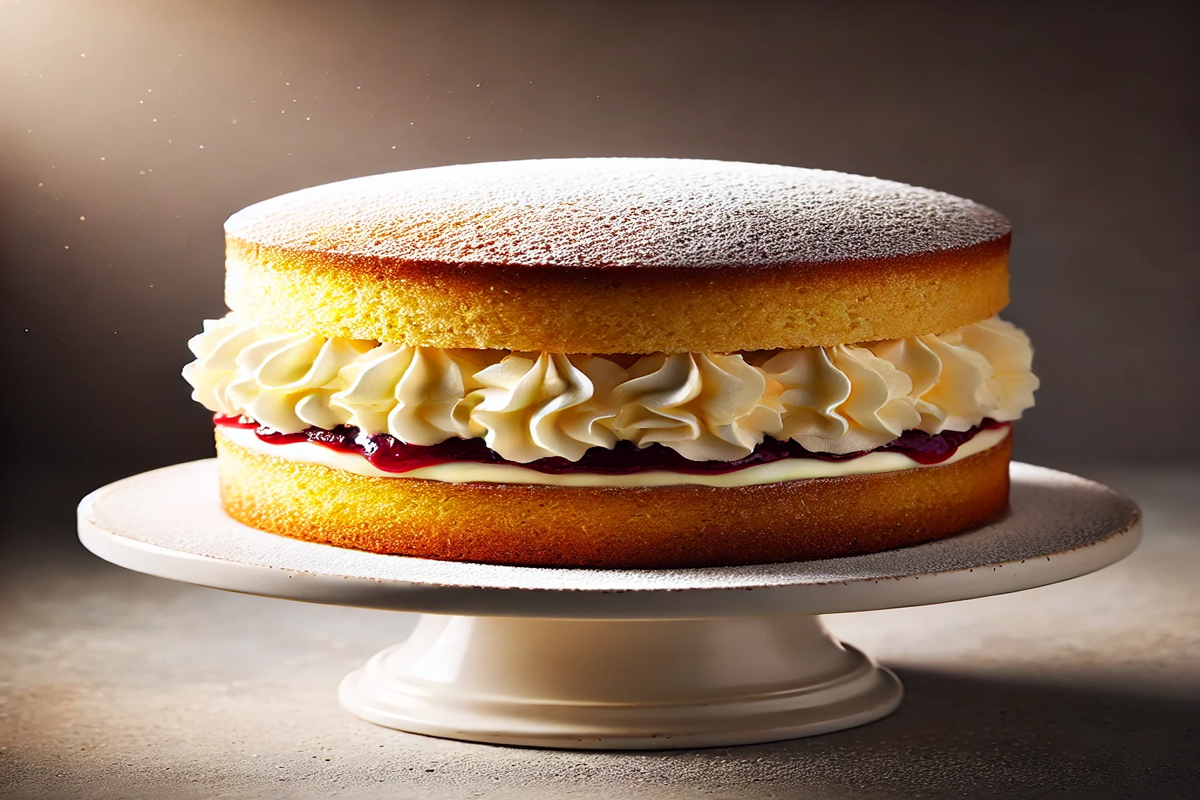Victoria sponge cakes, also referred to as Victoria cakes, are one of the most iconic British desserts. Known for their light, fluffy texture and simple yet delightful flavor, these cakes are typically sandwiched with a layer of jam and cream. Whether you’re a baking enthusiast or just someone with a sweet tooth, the Victoria cake is a must-try treat.
Looking to explore more cake recipes? Check out the Ultimate Guide to Birthday Cakes for more baking ideas.
The History of Victoria Cakes
The Victoria cake was named after Queen Victoria, who reportedly enjoyed a slice with her afternoon tea. It gained popularity in the mid-19th century with the invention of baking powder, which allowed bakers to create lighter, fluffier cakes. Over time, the Victoria sponge became synonymous with British teatime traditions, symbolizing both simplicity and elegance.
For more information on the history of cakes and how they evolved, see What Type of Cake is Best for a Birthday?.
Ingredients of a Classic Victoria Sponge Cake
Making a classic Victoria cake involves only a few basic ingredients, including:
- Self-raising flour: This ensures a light, airy texture.
- Eggs: The quantity of eggs should match the weight of the sugar and flour.
- Sugar: Use caster sugar for a smooth mix.
- Butter: Unsalted butter provides a rich, tender texture.
- Jam and cream: Traditionally, raspberry or strawberry jam and whipped cream are used as filling.
Interested in combining different flavors? You might enjoy pairing the classic Victoria sponge with a treat like these Earl Grey Cookies for a delightful tea pairing.
Variations of the Victoria Sponge Cake
While the traditional Victoria cake recipe is fairly simple, many modern variations add a twist:
- Buttercream instead of whipped cream: Many bakers prefer buttercream for a richer flavor.
- Additional flavors: Vanilla or almond extract is sometimes added to the sponge.
- Fresh fruit: Some versions of the cake include fresh strawberries or raspberries alongside the jam.
If you’re looking to explore different cake styles, try baking this Pumpkin Banana Loaf for another unique twist on traditional flavors.
Why Victoria Cakes Are a Timeless Favorite
Despite modern baking trends, Victoria cakes remain a favorite due to:
- Simplicity: With only a few ingredients, this cake is accessible for both novice and experienced bakers.
- Versatility: It’s perfect for any occasion, whether you’re serving it at tea time or for a birthday party.
- Perfect balance: The combination of sponge, jam, and cream makes for a light yet indulgent treat.
FAQs About Victoria Cakes
1. What makes a Victoria cake unique?
Victoria cakes are known for their use of self-raising flour, a light sponge, and a classic jam and cream filling.
2. Can I make a vegan version of a Victoria cake?
Yes! Simply substitute dairy products with plant-based alternatives like vegan butter and milk, and use egg replacers such as flaxseed or aquafaba.
3. How should I store a Victoria cake?
If the cake contains fresh cream, it’s best to store it in the fridge. Otherwise, a Victoria cake can be kept in an airtight container at room temperature for up to 3 days.
4. Is a Victoria sponge cake the same as a Genoise sponge?
No. A Genoise sponge is lighter and does not use butter in the same way as a Victoria sponge. Instead, the eggs are whipped to give the cake its structure.
Conclusion: Why You Should Try Baking a Victoria Cake
If you’re looking for a classic, easy-to-make dessert that’s sure to impress, Victoria cakes are the perfect choice. They’re simple, versatile, and offer a delightful mix of flavors that’s suitable for any occasion. With a little practice, you can master this timeless cake and even put your own spin on it.
